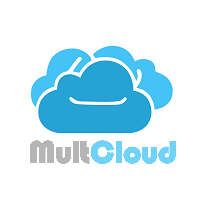Cloud Based Backups versus Sync Services – what’s the difference? Many have no idea not only of the difference but what each of these services do. So let’s begin.
Cloud Based Backups
The answer according to Wikipedia, “A remote, online, or managed backup service, sometimes marketed as cloud backup or backup-as-a-service, is a service that provides users with a system for the backup, storage, and recovery of computer files. Online backup providers are companies that provide this type of service to end users (or clients). Such backup services are considered a form of cloud computing.”
Connectech recommends Backblaze or Crashplan to back up your important data.
Unlike syncing services, which backs up only limited files that you select, cloud backup plans have large data capacities and are built to back up the majority, if not all, of the data on your computer. For instance, BackBlaze, a cloud backup provider, is one of the many cloud backup providers that automatically backs up everything on your computer except your operating system – you never have to select anything.
Sync Services
File sync services (aka File synchronization or just ‘syncing’) according to Wikipedia is “in computing is the process of ensuring that computer files in two or more locations are updated via certain rules. In one-way file synchronization, also called mirroring, updated files are copied from a ‘source’ location to one or more ‘target’ locations, but no files are copied back to the source location. In two-way file synchronization, updated files are copied in both directions, usually with the purpose of keeping the two locations identical to each other. In this article, the term synchronization refers exclusively to two-way file synchronization.” Syncing can be done with external hard drives, USB flash drives or on the cloud with a plethora of services who offer syncing. Sometimes this is also referred as Cloud Storage.
What’s the Difference?
According to For3 Technologies, who answers this question with “what better way to describe the difference than an explanation from Seagate, one of the leading hard drive manufacturers around.”
File Synchronization (or ‘synching’) is the process of ensuring that two or more locations contain the same up-to-date files. If you add, change, or delete a file from one location, the synchronization process will add, change, or delete the same file at the other location.
Backup refers to copying of data from one location to another.
Sync is not a backup.
code42 explains, “At the most basic level, cloud backup is designed to securely back up all your personal files and keep them safe so you can easily restore your files. Cloud storage is intended to make a subset of your files available for syncing and sharing with other devices or people. Ultimately, whether cloud backup or cloud storage is best for you depends on the features that interest you most.”
revuezzle puts it this way, “Cloud storage, also known as file sharing, simply entails storing modest amounts of data online. These data amounts include only files that you manually select. There are two main types of cloud storage: either files are stored in the cloud and accessed directly through the host site (such as Google Drive), or the system is integrated with your computer so that you can edit files in the cloud right from your desktop (such as DropBox).” However, this can also be done automatically through syncing.
Who Rates Best?
PC Mag has a list of the best 10 file syncing services and cloud storage services. Wikipedia has a page, Comparison of file synchronization software.

